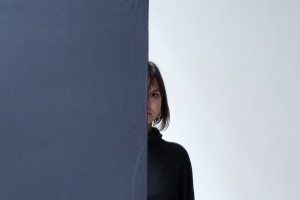The revival of painting?
There was a lot of hesitation amongst the editorial staff about the title for the main theme for this double issue of ARTA. Should we call it the Neo New Painting of today? The New Photo-Realism or The New Figurative? Should we call it The New Honesty, The Neo Pop-Socialism or The Revival of Painting since the 2000s? All of these possible (and questionable) labels only partially cover an obvious phenomenon that has been going on in the Romanian art scene in the last decade. We are witnessing an amazing, enormous, even viral comeback of this reign of visual art in its classic signification as painting.
The turbulent 90s that were so bewildered by the invasion of new artistic techniques and the sudden openness to internal and international contradictory aesthetic ideologies appeared to be placed, at least in the most visible part of the Romanian art scene, under the menacing threat of “the death of painting” as a major way of visual molding and aesthetical marking of reality. As opposed to the irruption of installation and performance art, of photography and video art as fast and dynamic formulas for implementing the artistic gesture in the concerning now, practicing painting seemed a traditional and repetitive occupation, incapable of visual freshness and technical anachronism – someone once said “whoever painted during those years was stupid” (Mihai Pop). The political urgencies of that moment, the need to rapidly adapt to anticommunism activity and to pro-capitalist ideologies, the rivalry between the new mediums, they all seemed to permanently invalidate painting’s capacity to say something profound about the new human condition and to adapt to the new world the arose in Romania. This occurred everywhere in Eastern Europe because of the difficult overlapping of a tenaciously viral post-communism and a new liberal ferociousness.
Still, painting survived in the depths of the studios for this “crossing of the transitional desert” even though it appeared to be killing painting in the public interest’s eyes. During the late 90s and especially in the mid 2000s there was a gradual and spectacular revival that placed painting back in cultural interest. The Rostopasca Group, a series of symptomatic exhibitions in the capital and in other cities, The School of Grays in Cluj, the Bucharest Neo-pop, these are just some of the marks belonging to this intense and overflowing phenomenon, of which you will find consistent and very interesting texts in this double issue of ARTA.
Of course, the art of painting is practiced in Romania in a thousand and one ways, from traditional and classical to modernist and new-modernist, and by all artistic generations. But our focus is on the young generation, from around the year 2000, that produced a true rupture in the way reality is seen and in the way today’s invading visual element is being processed. Rooted in the new media and in pop art, in the 60s and 70s hyperrealism and photorealism from where it uninhibitedly draws inspiration, the new painting is ultra-realist, figuratively cynical and super photographical, it is crudely honest, aggressive and ruthless and at the same time filled with a strange poetry about daily ordinariness and a metaphysical tautology of the absurd. And there is no coincidence that precisely this young Romanian painting, apparently anchored in an anthropological situation that is typical for the present Romanian situation, managed to gain, with the help of a few important names, the international recognition that seemed unimaginable a decade ago. There is a profound conjecture of vision between the young painting and the new wave of Romanian cinema that also gained international fame, or the new poetry of the 2000s..
Is it still possible to practice figurative painting of innocent evidence after the neo-avant-garde and especially the conceptual and post-war experiences? Is there a true critical dimension or an aesthetical distancing that is creative enough in this kind of pictorial duplication of the bare, neutral and flat everyday life? Does the photographical perfection of the image spare it or does it bring it closer to shallowness and absurd? What are the conceptual limits for this type of painting that apparently lacks transfiguration? Where does it hide in metaphysical transgression? These are just a few of the questions that this issue of ARTA wants to answer. More issues dedicated to painting in various stylistic and generational levels will soon follow.
Magda Cârneci, Editor-in-chief
POSTED BY
Cristina Bogdan
Founder and editor-in-chief, between 2014-19, of the online edition of Revista ARTA. Co-founder of East Art Mags, a network of contemporary art magazines from eastern and Central Europe. Runs ODD, a s...
www.evenweb.org